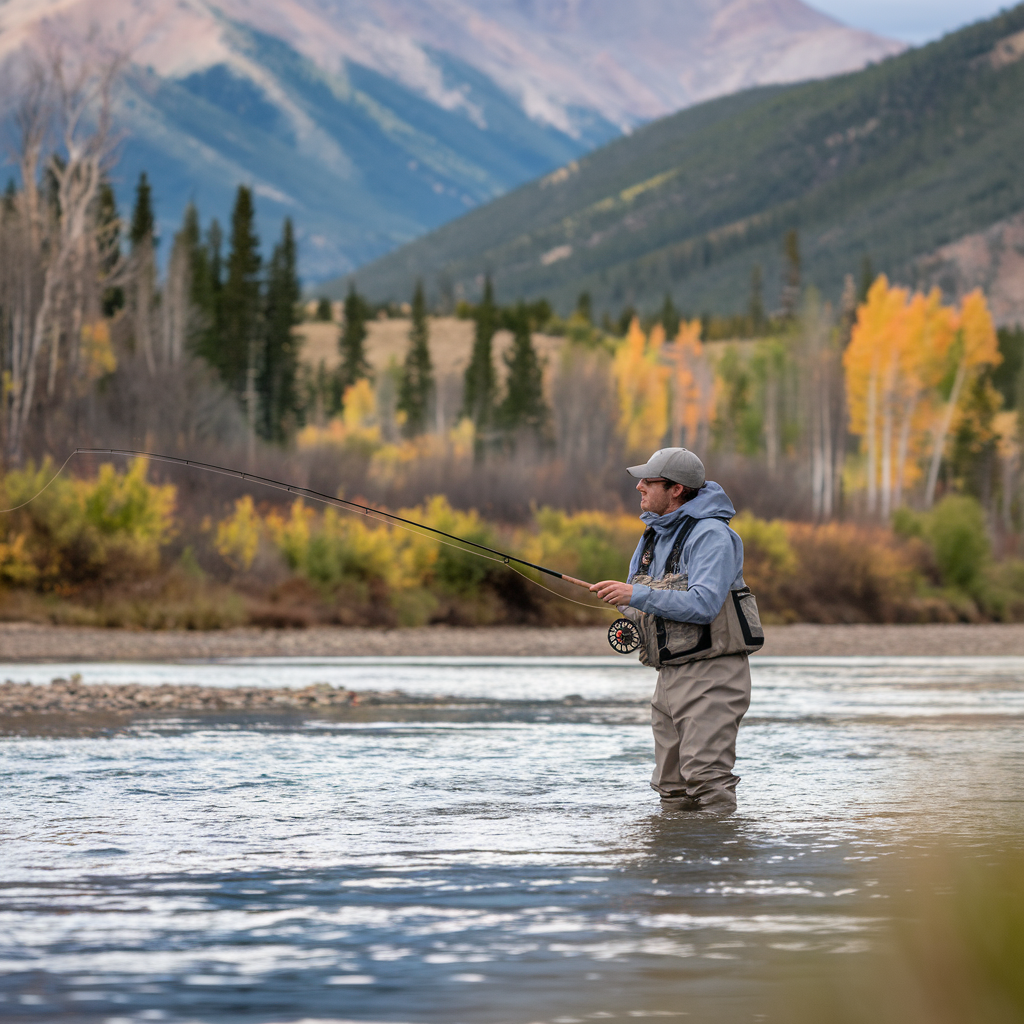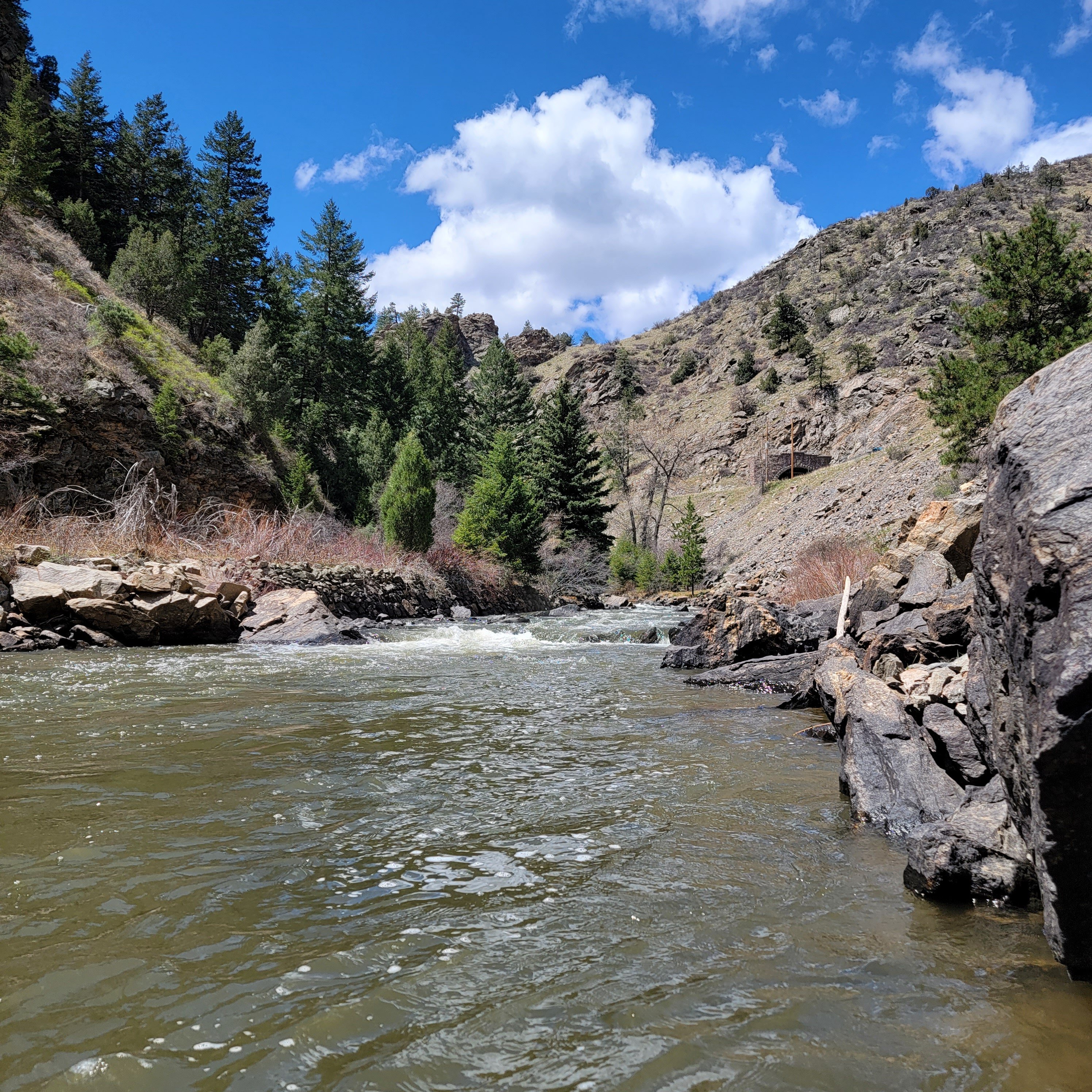Mutual respect among anglers is the secret to a relaxing fishing trip—understanding angler etiquette means giving fellow fishers enough space, keeping noise to a minimum, and always following the rules. By respecting each other and the water, we keep the peace, avoid tangled lines (and tempers), and make sure everyone has a shot at that perfect catch.
Listen to the Podcast
Understanding Angler Etiquette
 Angler etiquette: it’s like the secret handshake of the fishing world—a collection of unwritten rules that separates the civilized anglers from the ones who get mentioned in cautionary tales. Mastering it ensures your time on the water is remembered for great catches, not epic blunders.
Angler etiquette: it’s like the secret handshake of the fishing world—a collection of unwritten rules that separates the civilized anglers from the ones who get mentioned in cautionary tales. Mastering it ensures your time on the water is remembered for great catches, not epic blunders.
Top of the list? Give your fellow fishers some elbow room! No one enjoys uninvited casts or a surprise fly zipping past their nose. Imagine your fishing spot has an invisible fence, keep your line on your side, and everyone keeps their zen.
Keep the volume lower than your odds of landing a thirty-pounder. Loud chatter and blasting music don’t exactly scream “serenity now”—leave the party playlist at home and let the fish set the vibe. A little hush goes a long way toward making friends (and maybe even fooling a fish or two).
And don’t forget: rules are made for more than framing on the boathouse wall. Know your seasons, your size and bag limits, and any quirky local regs—following them not only keeps the fishery alive but also saves you from an awkward chat with the warden and angry glares from your fellow anglers.
Sharing Fishing Spots Responsibly
Think of fishing spots like the world’s worst-kept secret—they belong to everyone and no one, so check your “King of the Dock” attitude at the bait shop. Being a responsible angler means sharing the shoreline like you’re splitting the last donut: with a smile, minimal squabbling, and zero launching of rods in protest.
The art of sharing starts with communication. Roll up and spot some fellow fishers? Don’t just dive in, waving your tackle—offer a friendly “mind if I join?” instead. Polite conversation keeps the fishing feud levels at zero and might just net you a new fishing buddy or two.
If your favorite spot looks more like an angling festival than a tranquil retreat, take the high road (or, well, the next bend in the river). Spreading out helps reduce fish stress and stops you from accidentally starring in an underwater episode of “Angler Elbow Wars.”
And of course, leave no trace—unless you count fish stories and good vibes. Gather up every last bait wrapper and soda can (bonus points if you left it cleaner than you found it). After all, leaving the spot pristine is the real way to ensure that future anglers have something beautiful to argue over.
Practicing Proper Catch and Release

If you want to be a true champion of the fish—and avoid the stink eye from Mother Nature—mastering catch-and-release is non-negotiable. Done right, it keeps fish populations thriving and makes sure future anglers aren’t left trading fish stories while looking at empty hooks.
First up: the right gear. Barbless hooks are your best friends—they make releasing fish a breeze and ensure your catch doesn’t remember you as that thumb-fingered human who ruined its day. Add a landing net to your arsenal, and don’t forget to wet your hands before handling your slippery new acquaintance; nothing says “bad manners” like stripping off a fish’s protective slime layer.
Timing is everything—just like a good punchline. The longer a fish is stuck above water, the less likely it is to be the star of future underwater adventures. So be quick, be gentle, and skip the Instagram photo shoot unless you want to be known as the fish’s least favorite paparazzi.
And when it’s time to say goodbye, don’t just toss your scaly friend back like yesterday’s bait. Give it a proper sendoff: hold it upright in the water, and give a gentle swish to get those gills working again. When your fish swims off with attitude, you’ll know you’ve nailed it. Proper catch-and-release: for fish that live to swim another day—and for anglers with tales that don’t end in guilt.
Communicating Effectively on the Water
Let’s be honest—effective communication on the water can mean the difference between a relaxing day of fishing and the kind of tangle that inspires interpretive dance moves. Chatting with your fellow anglers isn’t just polite; it’s the secret sauce to keeping things friendly and untangled. Before you channel your inner casting hero, take a quick look around—your fishing neighbors will appreciate you not launching a surprise lure their way. Sometimes all it takes is a little eye contact or a nod, the universal language of “I’m about to cast, please keep your head attached.”
%20(3).png?width=600&height=338&name=Untitled%20(1920%20x%201080%20px)%20(3).png)
Politeness isn’t just for tea parties; it works wonders when sharing a fishing spot too. If someone strolls over to your patch of paradise, a friendly greeting can turn potential turf wars into epic team-ups (or at least civil coexistence). Should tempers rise, remember: there’s enough water (and fish tales) for everyone, so keep cool and talk it out—preferably not in fish puns, tempting as it may be. And don’t forget, safety first! If you spot a lurking log or a sneaky current, give the heads up. Nothing says “bad day” like discovering a hazard the hard way. By keeping the lines of communication as clear as your favorite fishing stream, we’ll all reel in a safer, more enjoyable time—tangle free.
Promoting Conservation Efforts

Let’s face it—being an angler isn’t just about swapping fish tales and showing off your latest “monster catch” selfies. We’re also the unofficial guardians of our watery playgrounds and the critters living there. Want more fish in your future? Keep those populations happy and their habitats in tiptop shape. Here’s how to be a sustainability superstar in waders: stick to the rules—no, you can’t keep that teeny fish just because it looks cute. Respect size and catch limits unless you want future anglers to be reenacting scenes from ‘Finding Nemo’ with actual empty ponds. Keep your environmental impact lighter than your tackle box by choosing gear that won’t hang around for centuries and being picky about where you cast your line (save the underwater tangling for your earbuds).
Ready to level up? Join cleanup missions and pitch in to restore fish habitats. Whether you’re planting trees, sprucing up a stream, or helping stock the next generation of slippery swimmers, your efforts won’t go unnoticed (except by the fish—they're pretty occupied).
Finally, don’t be shy—spread the wisdom. Share your conservation hacks with your fishing buddies, family, or that stranger at the bait shop. The more people who care, the more fish-filled, epic fishing trips we’ll have tomorrow. If we all play our part, we’ll guarantee ourselves stories worth telling for years—and more than just the one that got away.
.png?width=300&height=100&name=Copy%20of%20Rise%20Beyond%20Logo%2012.31.24%20(300%20x%20100%20px).png)
.png)


-1.png)